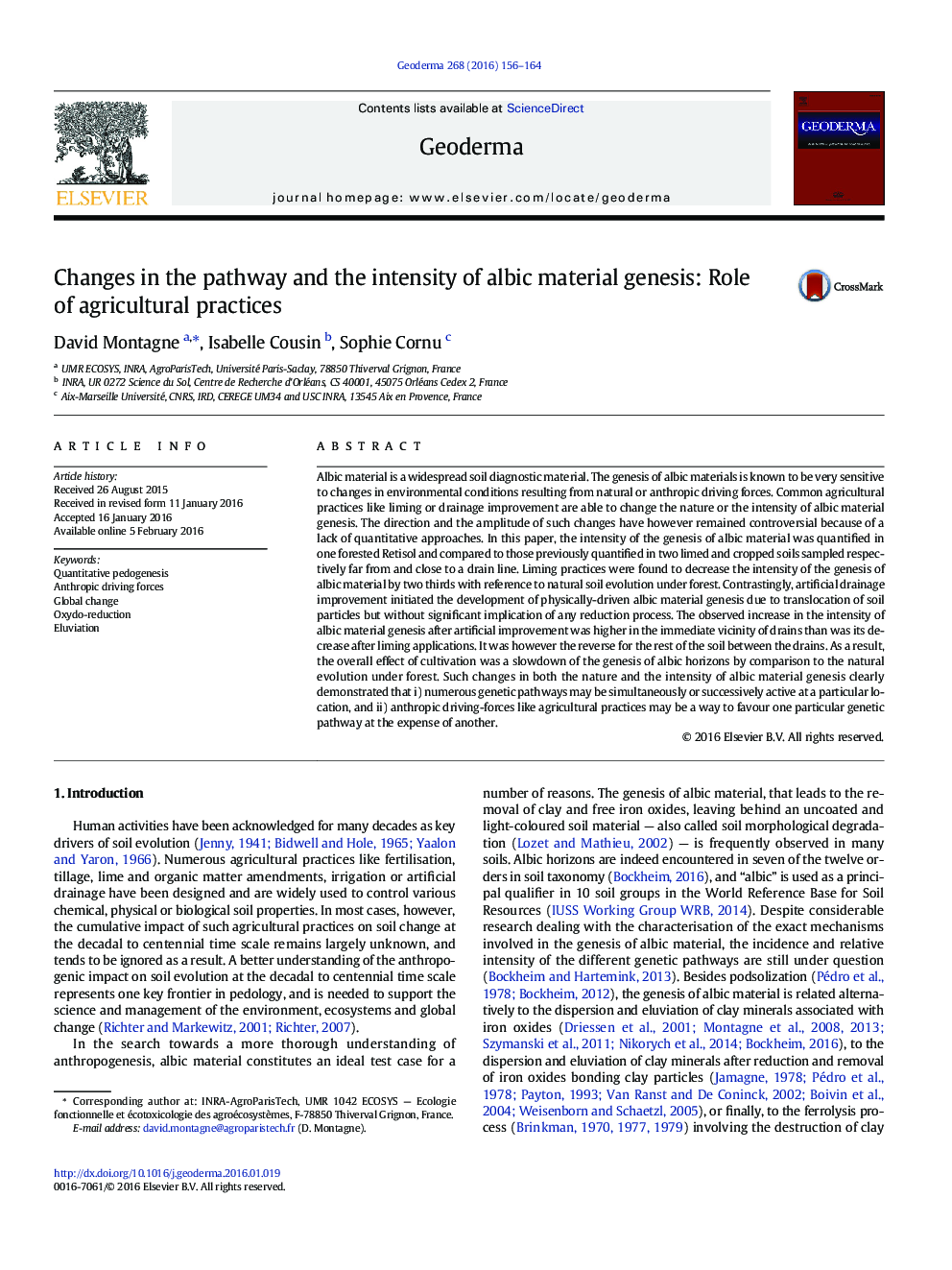| Article ID | Journal | Published Year | Pages | File Type |
|---|---|---|---|---|
| 4573037 | Geoderma | 2016 | 9 Pages |
•Genesis of albic material: several genetic pathways for a similar soil feature•Cultivation: from a geochemically- to a physically-driven albic material genesis•Liming and artificial drainage respectively decelerates and accelerates albic material genesis.•Cultivation decelerates albic material genesis relative to that under forest.
Albic material is a widespread soil diagnostic material. The genesis of albic materials is known to be very sensitive to changes in environmental conditions resulting from natural or anthropic driving forces. Common agricultural practices like liming or drainage improvement are able to change the nature or the intensity of albic material genesis. The direction and the amplitude of such changes have however remained controversial because of a lack of quantitative approaches. In this paper, the intensity of the genesis of albic material was quantified in one forested Retisol and compared to those previously quantified in two limed and cropped soils sampled respectively far from and close to a drain line. Liming practices were found to decrease the intensity of the genesis of albic material by two thirds with reference to natural soil evolution under forest. Contrastingly, artificial drainage improvement initiated the development of physically-driven albic material genesis due to translocation of soil particles but without significant implication of any reduction process. The observed increase in the intensity of albic material genesis after artificial improvement was higher in the immediate vicinity of drains than was its decrease after liming applications. It was however the reverse for the rest of the soil between the drains. As a result, the overall effect of cultivation was a slowdown of the genesis of albic horizons by comparison to the natural evolution under forest. Such changes in both the nature and the intensity of albic material genesis clearly demonstrated that i) numerous genetic pathways may be simultaneously or successively active at a particular location, and ii) anthropic driving-forces like agricultural practices may be a way to favour one particular genetic pathway at the expense of another.
